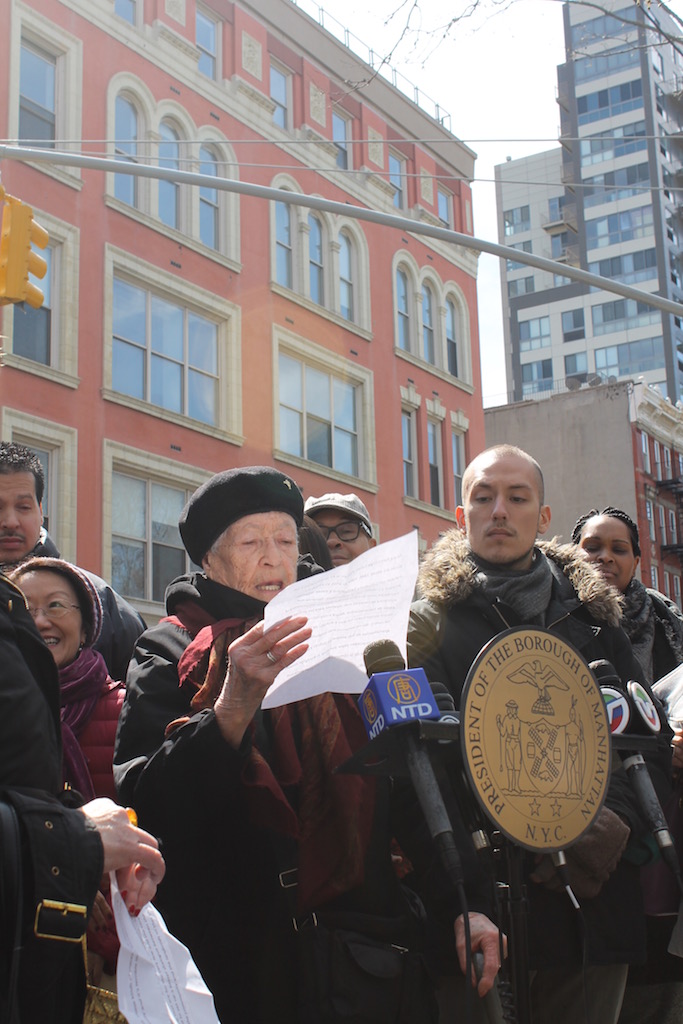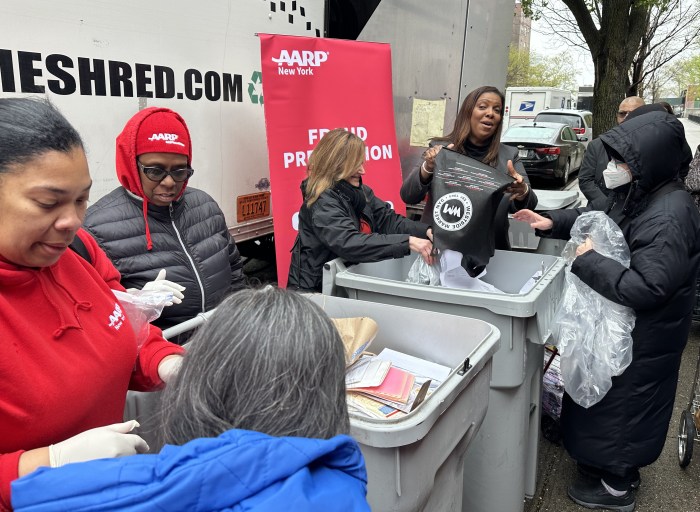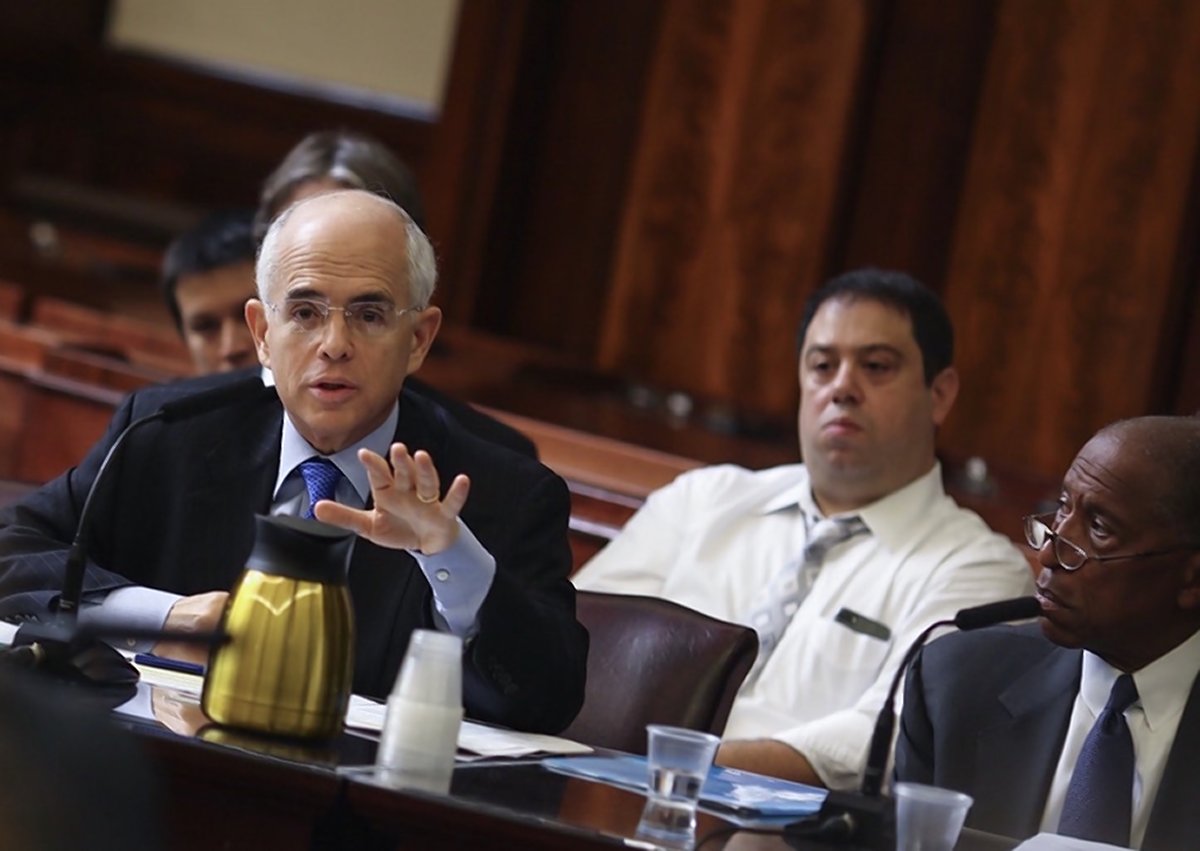
BY LINCOLN ANDERSON | Updated Wed., Oct. 5, 10 p.m.: Last Thursday was definitely one action-packed day in the ongoing saga of Rivington House on the Lower East Side.
City councilmembers grilled the first deputy mayor, as well as the corporation counsel and another top administration official, in hopes of somehow getting to the bottom of the murky real estate scandal.
Meanwhile, midway through the lengthy hearing — in fact, right after First Deputy Mayor Anthony Shorris had mercifully gotten off the hot seat — Mayor Bill de Blasio blasted out a press release, announcing that the city would be building a new senior affordable housing and healthcare facility on the Lower East Side.
This new facility, the release said, would “replace shuttered Rivington House,” the former AIDS hospice that was shockingly lost when the city quietly lifted a deed restriction limiting the property to nonprofit healthcare use.
The deed restriction’s lifting, in turn, paved the way for the Forsyth St. property — a handsome former school building — to be sold, and then promptly flipped, at a huge profit, for market-rate residential development. The story quickly spiraled into a scandal that has shocked the city and damaged de Blasio, and continues to dog him.
Thursday’s hearing by the City Council’s Committee on Oversight and Investigations — co-chaired by Vincent Gentile and Ben Kallos — clocked in at a solid six hours.
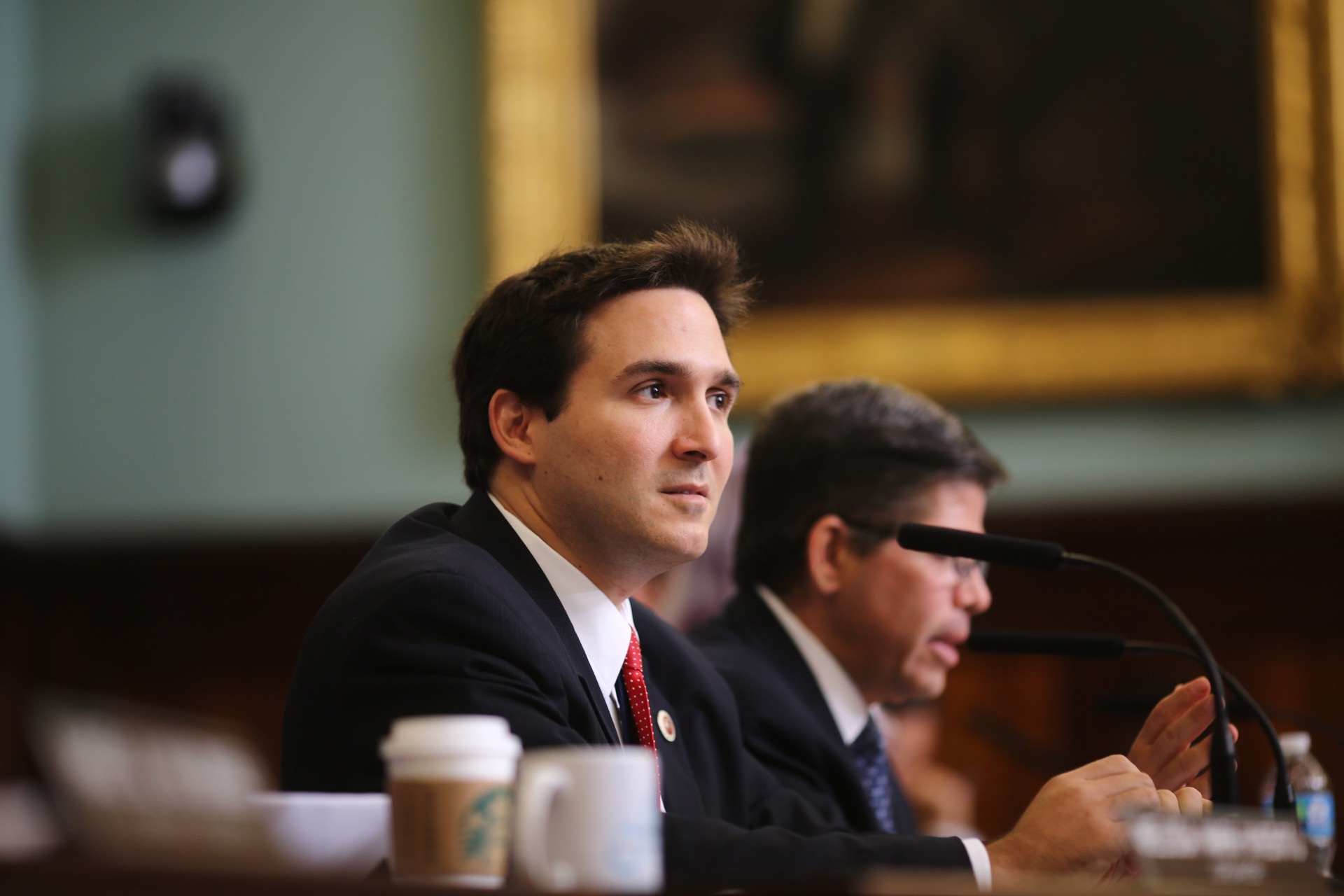
Basically, Shorris and Lisette Camilo, current commissioner of the city’s Department of Citywide Administrative Services, testified that Rivington House’s deed restriction was lifted without any community notification because “the system” screwed up.
No specific person was to blame or was disciplined for what went down, they said.
“The system was flawed,” Shorris said. “There were many people involved. We execute our policy goals extremely effectively. This was a case where we made a mistake.”
In August, Comptroller Scott Stringer released a report on his office’s investigation into the imbroglio. At a press conference, he summed up the findings as gross “mismanagement” at City Hall having been to blame for the building’s loss to luxury development.
Last Thursday the officials repeatedly stressed, however, that new, improved processes have since been put in place, so that something like this won’t ever happen again.
As for the developers and how they managed to pull a fast one on — allegedly, without the city ever being aware of it — Shorris repeatedly called them “deceptive.”
Camilo previously was director of the Mayor’s Office of Contract Services, or MOCS, when that agency, per its usual duties, officially signed off on the lifting of Rivington House’s deed restriction. She subsequently took over DCAS — which manages roughly 4,000 city-owned buildings —on Jan. 25 of this year. Its previous director had been abruptly shunted to another agency. Camilo testified that she found out about the Lower East Side building’s sale within a few days after starting at DCAS.
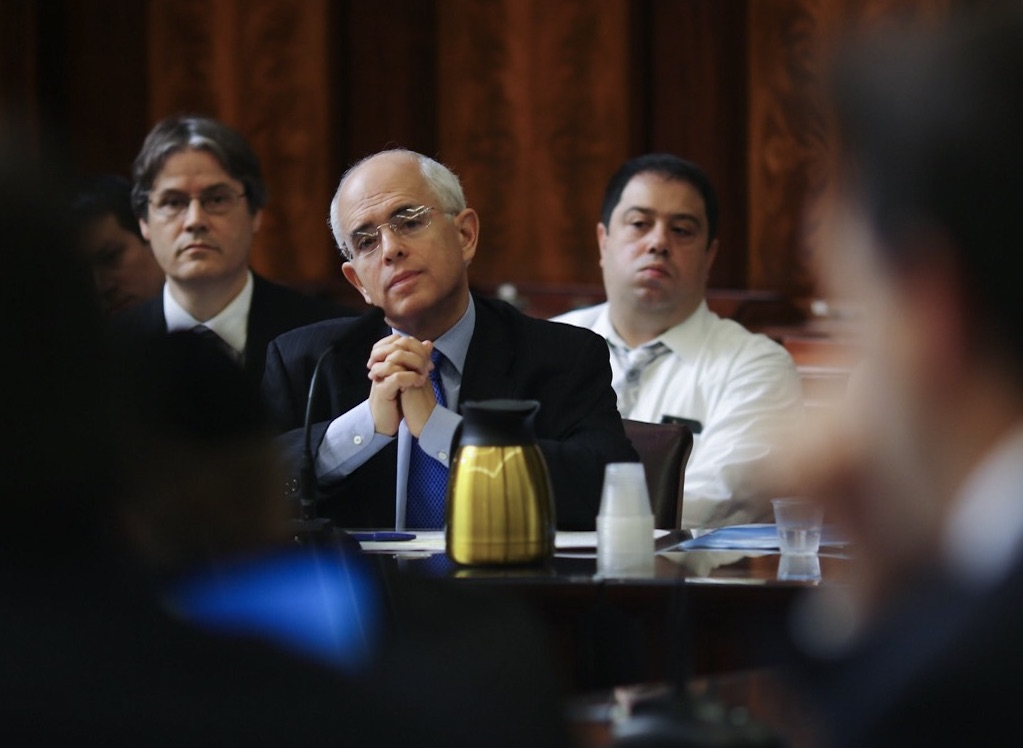
Shorris testified that he had started having discussions about Rivington House during de Blasio’s first year in office, in the fall of 2014. VillageCare, the building’s owner, had come to City Hall seeking help, saying the nonprofit nursing home was a financial burden, threatening to bankrupt it.
Shorris said the discussions eventually focused on it becoming a for-profit nursing home — his own preferred use — and this is what he assumed it would become.
“At no time,” Shorris stated, “did anyone write, call, meet or discuss with me the notion that the actions being taken by [DCAS] would allow the property to be converted to luxury housing.”
Deputy mayor in dark
Time passed and he didn’t hear about the building again for about a year until after Camilo learned of the sale and notified him of it, he said.
“I did not discuss Rivington [House] again until late February 2016 when the new commissioner, Lisette Camilo, reported to me that the site had been sold to a luxury housing developer for in excess of $100 million,” Shorris said.
The deputy mayor said de Blasio also had been unaware the sale.
“I spent the next few days trying to understand what transpired,” Shorris said, “and then I informed the mayor as news accounts were beginning to run — the first time he heard anything about the matter.”
Camilo said after informing Shorris of the Rivington House sale, she called the Department of Investigation the next day to have them look into it. Shorris said he, too, called D.O.I. to reassure himself that they were on it.

MOCS produces the City Record, which contains listings of city-owned properties for sale.
Camilo said the sole public notice of the Rivington House property being on the market was a listing in the City Record that only identified it by its Forsyth St. address. Councilmember Kallos, however, corrected her: In fact, the listing had not even been an address, he said — just the block and lot number.
“Do you know what the block and lot number are for your office?” he asked her, to which Camilo responded, no.
The DCAS commissioner said she first became aware of the property’s sale this February — although Community Board 3 previously “had alerted her of the possible flip” in a Jan. 25 letter.
“You just stated you got a letter from Community Board 3 and you didn’t take it to the first deputy mayor till a month later?” Kallos asked her.
“Yes — I was learning,” Camilo responded.
Pro forma to SNAFU
In fact, the procedures the city followed with 45 Forsyth St. are the ones it has been using for such DCAS-owned properties over the past two decades, the city officials maintained. In short, it doesn’t seem to be a very rigorous process.
Camilo said, basically, it was “a 20-year-old process that primarily just focused on the bottom line.”
“We didn’t know that the public hearing was happening on the deed restriction,” Councilmember Margaret Chin stated. “We did not even know this discussion was happening.”
There were suggestions that lifting a deed for such properties should trigger an official ULURP (Uniform Land Use Review Procedure) seventh-month-long review, including public hearings. But Shorris told the councilmembers, “The vast majority of these restrictions don’t need to go through ULURP — it would be a waste of your time.”
More than 1,000 city-owned buildings currently are under deed restrictions, the committee members were told. Councilmember Chin and Manhattan Borough President Gale Brewer are pushing new legislation to create a database of all such properties, along with requirements for public notice and review if any change of the restrictions is being contemplated.
When the city lifts a deed restriction, the owner typically must pay the city 25 percent of the property’s assessed value — since it will now be worth so much more. In the case of Rivington House, the assessed value was $64 million, so the cost to lift the restriction was $16 million.
Lobbied to waive fee
VillageCare had retained top lobbyist Jim Capalino to try to get the administration to waive this payment. (The organization’s plan was that a portion of the profits from the sale would be “redistributed” into H.I.V. / AIDS services in the Lower East Side.) Capalino previously told The Villager that VillageCare was pressuring him to get this done by the end of the Bloomberg administration — otherwise the talks would have to be started up all over again under de Blasio. But he couldn’t pull it off, and VillageCare canned him before Bloomberg left office. Capalino told the newspaper that after that point, he had nothing more to do with the Rivington House property or the issue of the deed restriction.
The property was sold to Allure Group for $28 million last year, with the understanding it would become a for-profit nursing home, assuming the city modified the restrictions.
Asked how Allure could even buy the property, Shorris noted it has “a nonprofit arm.”
Allure paid the agreed-to $16 million to modify the deed — but then, mere months later, flipped the property, selling it to luxury developer Slate for $116 million — turning a $72 million profit.
Amid the ongoing furor over the Rivington House scandal, de Blasio in July announced that this $16 million fee would be used within the Lower East Side community for healthcare purposes. Thursday’s press release noted that this sum would be used to construct the new facility, though the release added that the project’s cost actually would exceed this amount.
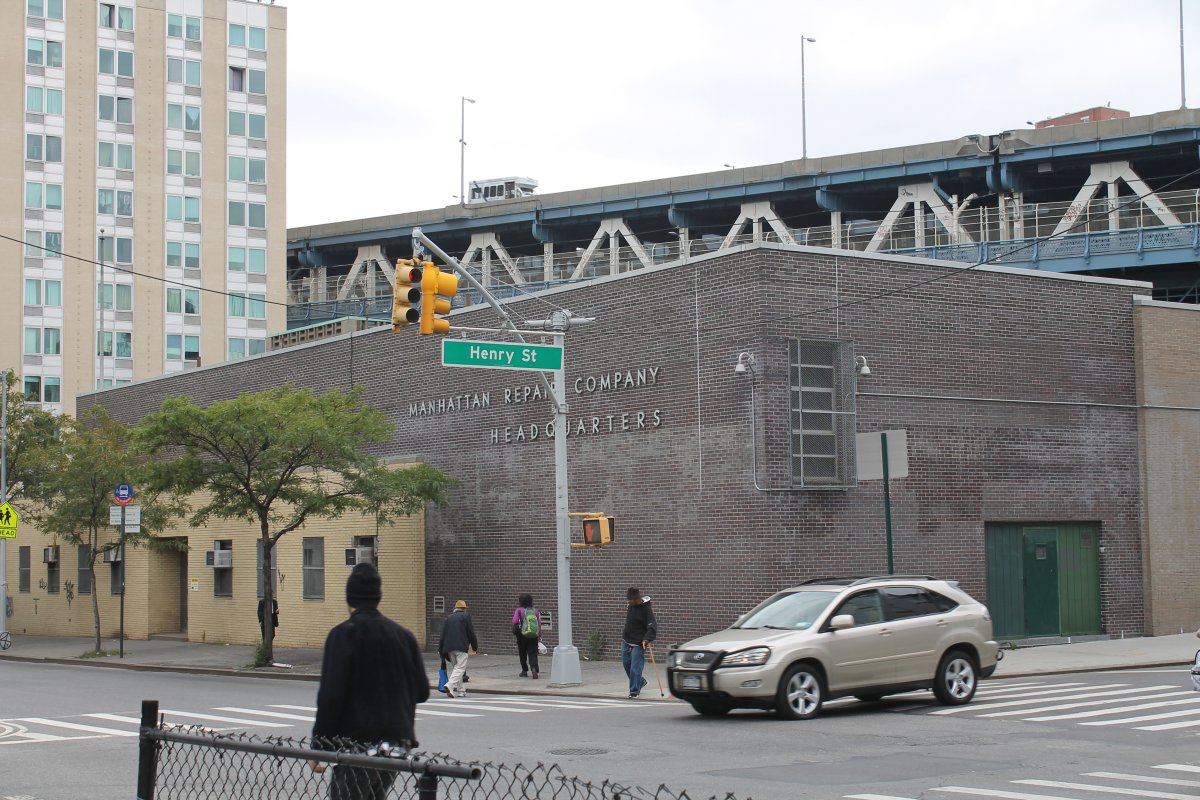
Pike St. appeasement
The new L.E.S. senior housing and healthcare project would include 100 apartments in a mixed-use building at 30 Pike St., a property currently owned by the city’s Department of Environmental Protection.
“Rivington House’s conversion to luxury housing never should have happened,” de Blasio said in his statement in the press release. “This community was the victim of a broken process, city error and unscrupulous developers looking to make a buck. Our reforms will prevent that from ever happening again. This investment is a reflection of our unwavering commitment to the health of this neighborhood.”
‘We want building back!’
However, local politicians, advocates and community members continue to stress that they “want Rivington House back” — as in, returned to the community as a healthcare facility.
At a town hall on how to address the Rivington House situation earlier this year at University Settlement, Chin, along with Melissa Aase, the settlement’s executive director, and others repeatedly said — to the audience’s cheers — that what everyone wants is for the building to be returned to the community.
Aase noted that the old school building is really worth about $70 million, when the cost of an extensive interior renovation from a few years back that increased its usable space is factored in. In short, the $16 million does not even begin to approach the value of what was lost, Aase said.
Also testifying at City Hall Thursday was Zachary Carter, the corporation counsel, or city’s top law officer. The councilmembers interrogated him on why his department had so heavily redacted documents about Rivington House requested by the Department of Investigation. Carter replied he felt that only the “relevant” parts of the documents should be handed over. The councilmembers blasted this behavior as “shocking.” At any rate, under pressure, Carter eventually had forked over the un-excised papers.
Legal options?
Chin asked Carter what legal actions he is considering taking to restore Rivington House to the community.
“We are looking at every legal option to, if not reverse, then blunt the impact of what happened here,” he said. “We will make every effort to pursue legal recourse.”
Carter added that, depending on what is turned up in the ongoing investigations into the real estate fiasco, the developer could possibly be hit with “civil fraud” charges.
Speaking earlier, Deputy Mayor Shorris also said the city doesn’t know if it can get the building back, but is “exploring options.”
At the hearing’s end, a small number of members of the public — less than 10 — testified, among them, Susan Stetzer, C.B. 3 district manager; K Webster, founder of Friends of Rivington House; and Annie Wilson, a former squatter from 544 E. 13th St. Carlos “Chino” Garcia, the head of CHARAS, which used to occupy another former school building — the old P.S. 64, on E. Ninth St. and Avenue B — was also in the audience early on, but left before it was time for the public to testify.
Stetzer scoffed at the notion the public was notified of the deed-lifting.
“If you only give notice by block and lot, you are not giving notice at all,” she said.
Webster said losing the nursing home’s beds is a hit to affordable housing.
“We insist that those 215 affordable homes be returned to the community,” she urged. The pledged 30 Pike St. facility, though, would only have half that number of units.
Brewer, Chin weigh in
Comments by both Chin and Brewer about the new project were included on the mayor’s press release about the plan.
“My first wish is to return Rivington House to its previous use, a home for those who needed assisted-living support,” Brewer said. “But I look forward to working with the administration and the community to build an equal number of permanent affordable senior housing and assisted-living units in the neighborhood.”
Calling it “a win” for the Lower East Side, Chin said, “The decision to pursue a comprehensive senior health facility at this site will allow for a continuum of care that I hope will become a model for communities across our city. I look forward to working with the administration to ensure that this facility will be accessible to the growing number of low-income seniors who need more affordable housing and healthcare options in the neighborhood.”
An El of a racket
Meanwhile, Webster, who is also on C.B. 3, said the Pike St. site is less than ideal, but she’ll take it — although Rivington House still must be returned, too.
“The community board has been trying to get that for affordable housing for a really long time,” she said of 30 Pike, albeit adding, “It’s underneath a very, very noisy subway train. Not so great for elders or those who are disabled.”
She was referring to the steady stream of trains — the B, D, N and Q lines — that thunder over the nearby Manhattan Bridge day and night.
But noting that the number of homeless the city is housing recently spiked to a record high of 60,000, Webster said, “I say — go ahead and use both sites for affordable housing!”
On the other hand, the Rivington House property overlooks leafy Sara D. Roosevelt Park in the heart of the hip new Lower East Side.
A promise broken
Tessa Huxley, a neighbor of the former Rivington House, also testified at the hearing. Speaking afterward, she said she was at the meeting back in the 1990s when the deed restriction was hashed out amid the pledge that the old school would be converted to an AIDS hospice.
“I was there,” she said. “The promise wasn’t for 10 years. We understood it was forever. And the agreement was, if AIDS was no longer an issue, it would be another healthcare facility.
“We accepted AIDS housing on the Lower East Side. We accepted everyone. …” After a pause, she added, “We shouldn’t have accepted the rich people.
“I’m just so upset,” she said. “I thought I lived in a democracy.”



